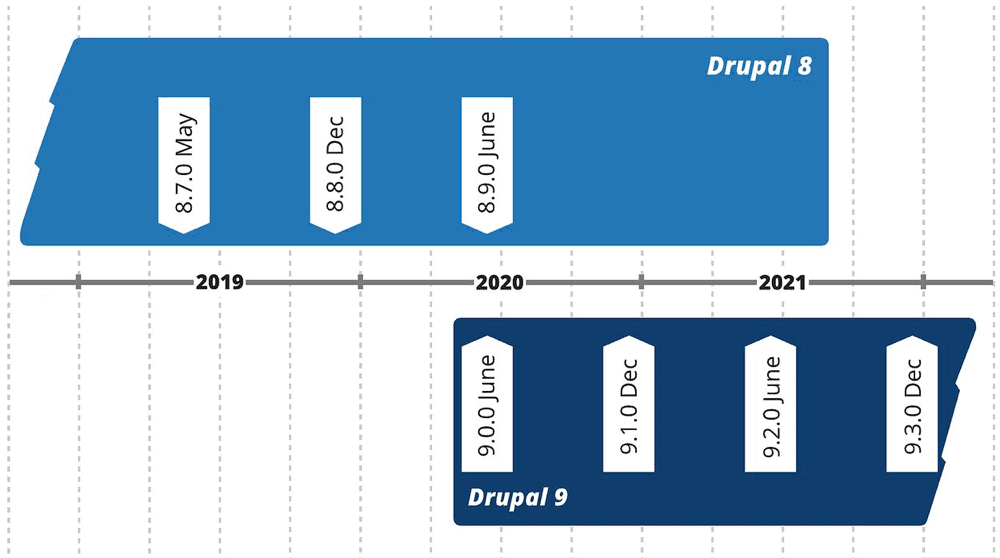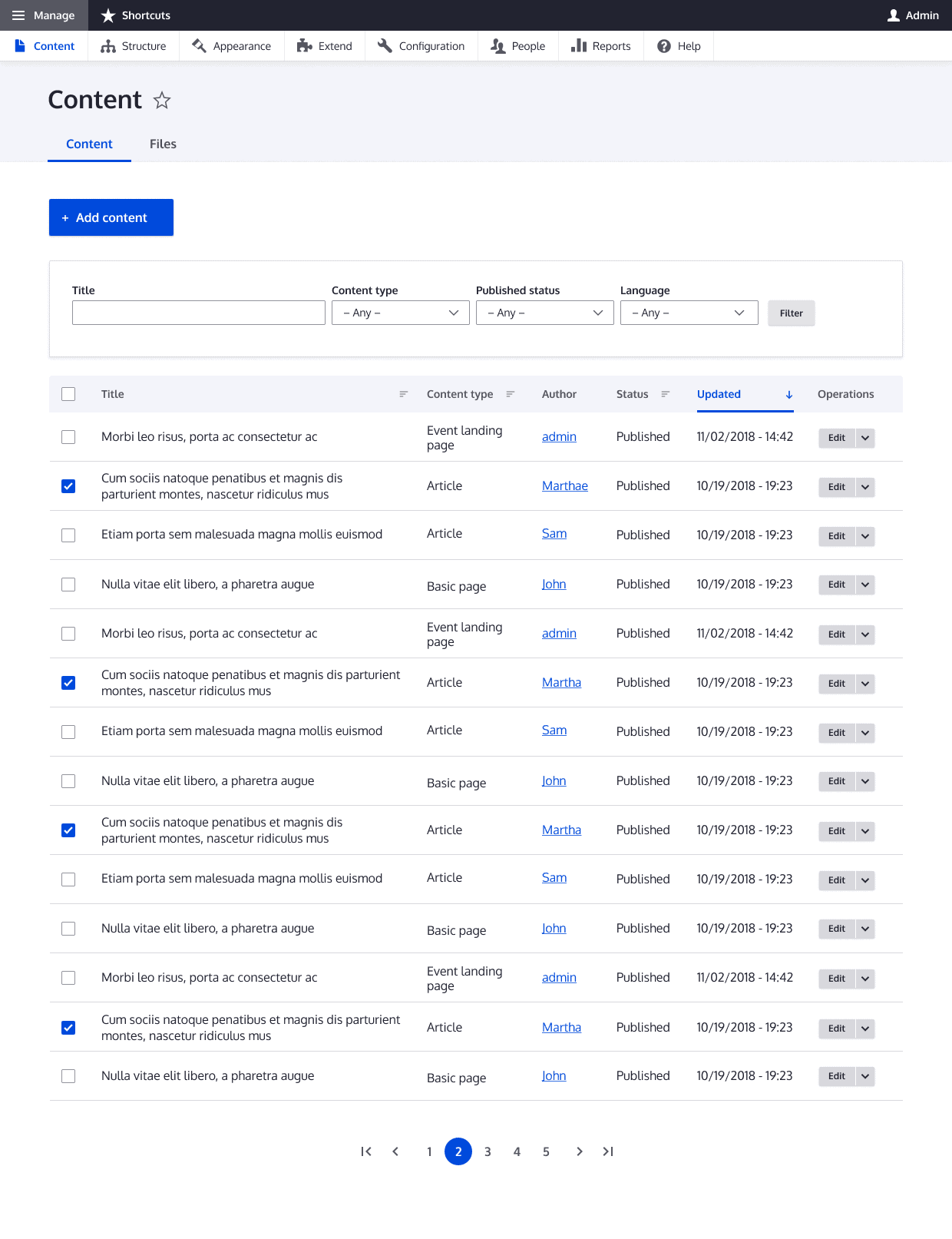Top 5 Reasons to do a Drupal Version Update
From Dries Buytaert (the creator of Drupal) “Drupal 7 will be end-of-life in November 2021, Drupal 9 will be released in 2020, and Drupal 8 will be end-of-life in November 2021.” Check out the top 5 reasons to do a Drupal version update below:
1. The deadline is approaching.
If you haven’t heard, Drupal 7 and Drupal 8 are hitting End of Life (EOL) November 2021. This means that there won’t be any more community-supported updates, a scary prospect from a data and brand reputation standpoint.
The risks of continuing to use software that has passed EOL are numerous. Potential technical consequences vary, but may include security vulnerabilities, buggy site functionality, loss of data, or worse yet data breaches. Beyond the technical implications, the cost of supporting EOL software increases due to the lack of previously low cost to apply open source updates and the decreasing pool of companies willing to support discontinued software.

2. Upgrade paths are different for Drupal 7 and Drupal 8. You need to know your options.
Drupal 7 has no streamlined upgrade path to get to Drupal 9. In order to upgrade from Drupal 7 to Drupal 9, you must first rebuild the site’s structure and functionality in Drupal 8. This includes content types, taxonomies, views, blocks, modules, etc. The difficulty is that some modules were incorporated into core software and some modules are no longer maintained in Drupal 8. An upgrade is possible, but is arduous and requires meticulous curation to ensure that the new site includes all functionality from the previous site.
Drupal 8 like Drupal 7 reaches EOL on the same timeline. Thankfully, Drupal 8 has an upgrade path to get to Drupal 9. This is great news for site owners, but the platform still needs to be upgraded by a drupal development team.
When Drupal 9 is released on June 3, 2020, it is best to begin upgrading as soon as possible to ensure the upgraded site is ready to launch prior to Drupal 8 EOL. This date is also when Drupal 8 will be shifted into long term support (updates only released for security).
3. Drupal 8 and Drupal 9 have better administrative capabilities.
Some of the great advantages you’ll see with a Drupal version upgrade are the improved administrative capabilities in Drupal 8 and soon in Drupal 9.
Both pieces of software have redesigned the administrative experience and content management controls to be much more streamlined and inline with modern CMS experiences. While Drupal 8 has some major interface updates that Drupal 7 users will appreciate. The Drupal 9 team has focused efforts on creating a simple, modern, and fast content management experience via an upgraded design, modernized tooling, and a React-built backend.

4. Start preparing right away.
While the community touts that the upgrade from Drupal 8 to Drupal 9 will be seamless, this would be the first time Drupal has attempted to seamlessly upgrade to a new major version.
As a website owner, you need to be prepared to begin your upgrade process shortly after the release of Drupal 9. This will ensure that all functionality can be migrated and tested prior to the launch of your new site. While many Drupal community developers are continuing to support their modules, they are under no obligation to adhere to the official time table. This is worrying as many corporate sites are reliant on the regular maintenance of contributed modules. Documentation suggests that Drupal 9 will support Drupal 8 modules, but actual compatibility remains to be seen.
While November 2021 may seem like a long way away, this doesn’t mean you should wait until the last few months to upgrade. Being prepared and knowing what functionality doesn’t have a smooth upgrade path will pay dividends when the EOL date hits.

5. Prepare for the required investment.
In the vein of preparation, you must be prepared from a budget and time perspective for what’s required to upgrade. This is especially the case for a Drupal 7 to Drupal 8 upgrade.
Our upgrade process starts with an honest assessment of what is currently in place. From there, we will present options that typically include upgrading the site in place, redesigning the site entirely on Drupal 8, or replatforming to a more suitable CMS if necessary. The decision of which option to go with is a balance of cost and benefit. If the site is laden with technical debt, sometimes the cost to upgrade can outweigh the cost to redesign entirely and start fresh.
A Drupal 7 to Drupal 8 migration will require a significant investment. This may make you consider that it’s time for a website redesign versus a straight migration.
What’s Next?
If you own or manage a Drupal-based site, be prepared to upgrade. The risks of not upgrading far outweigh the cost, so begin thinking about your plan.
If you need more information or help planning the upgrade to Drupal 9, give us a call at (804) 433-3582, email [email protected], or fill out our contact form. We’d love to hear from you and talk through what would be best to keep your organization running smoothly.
